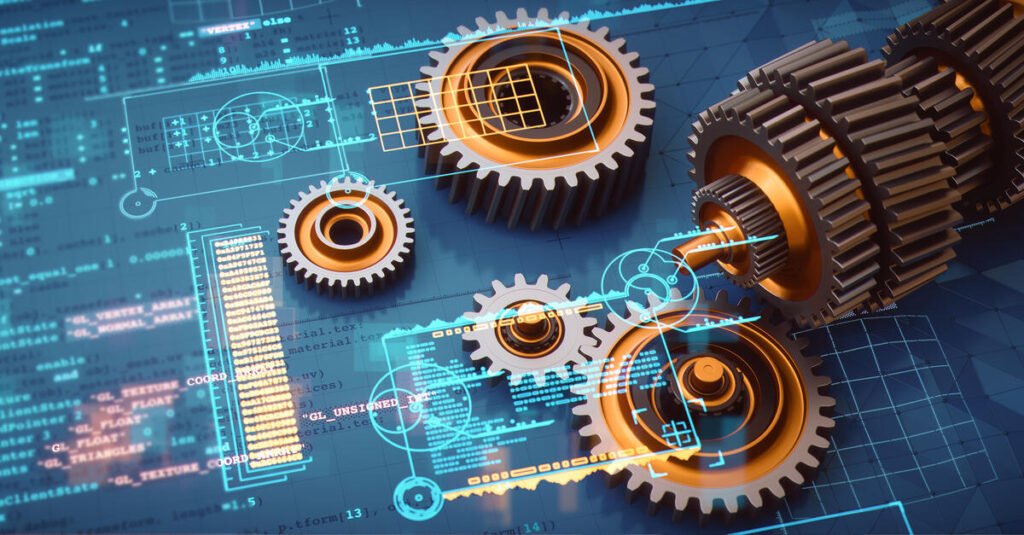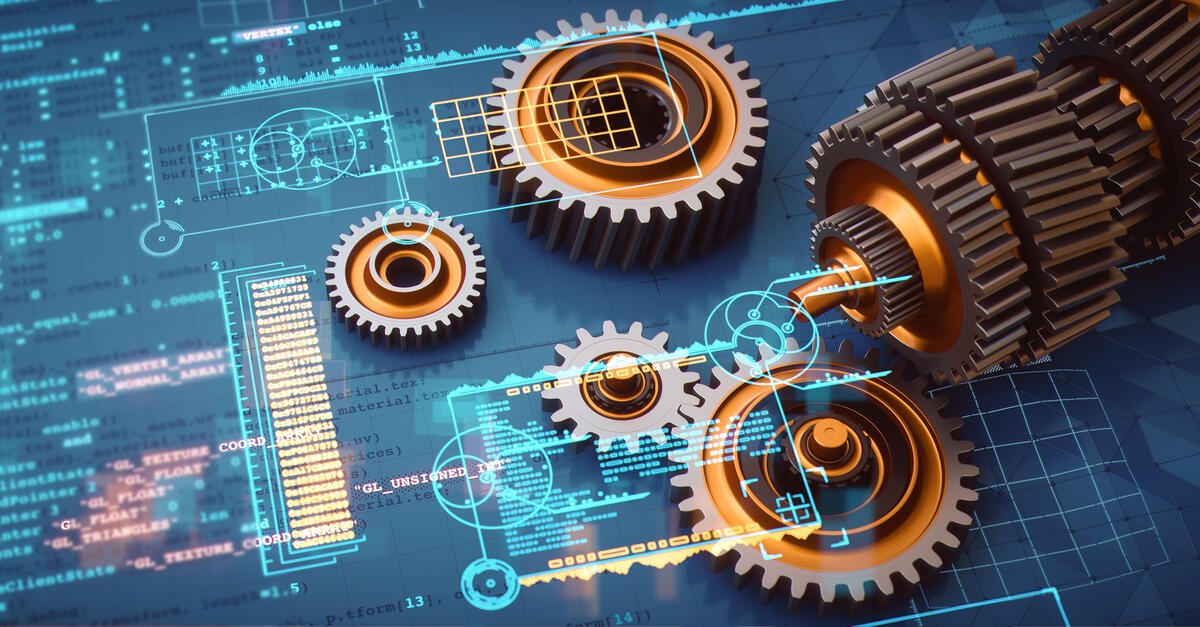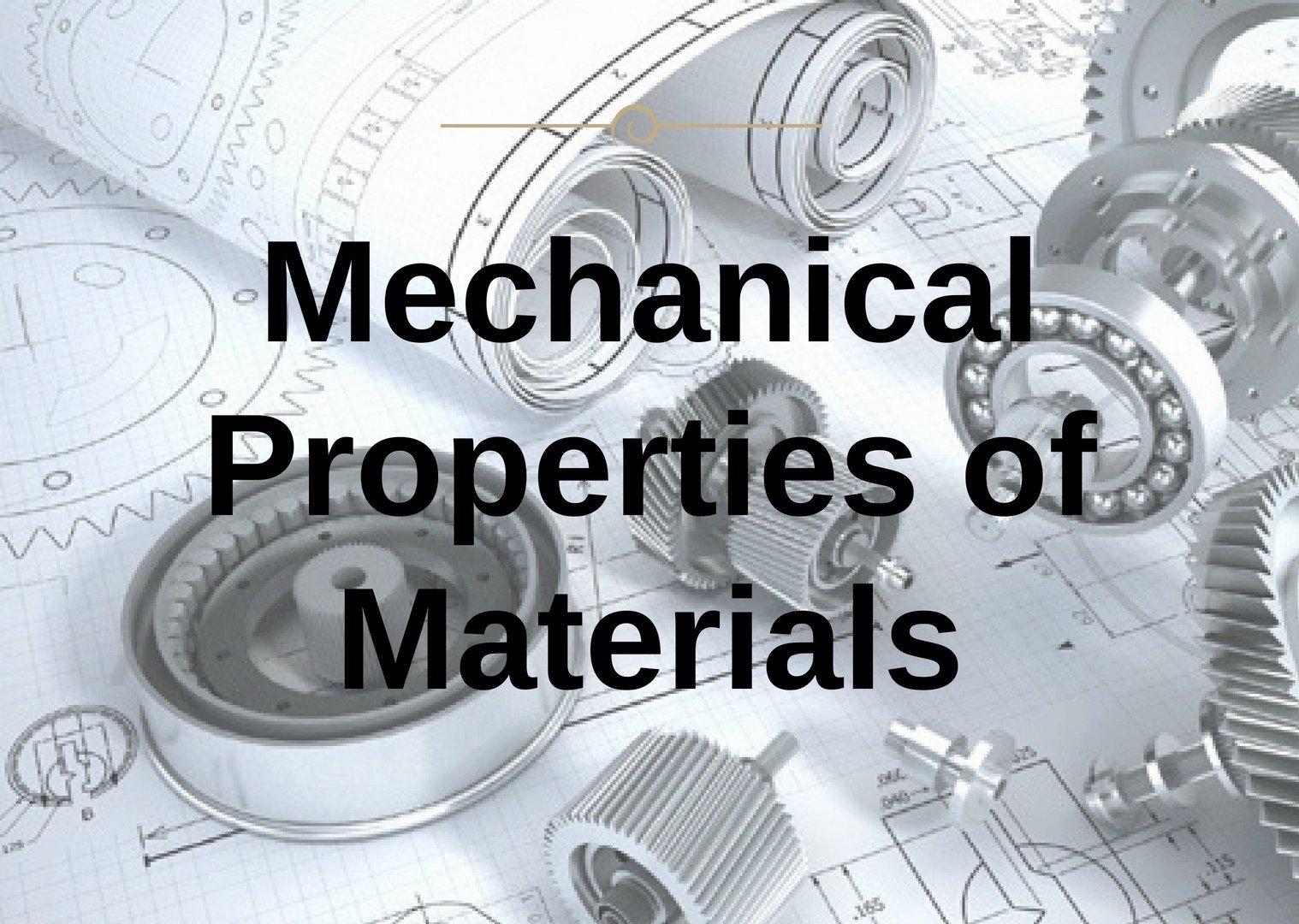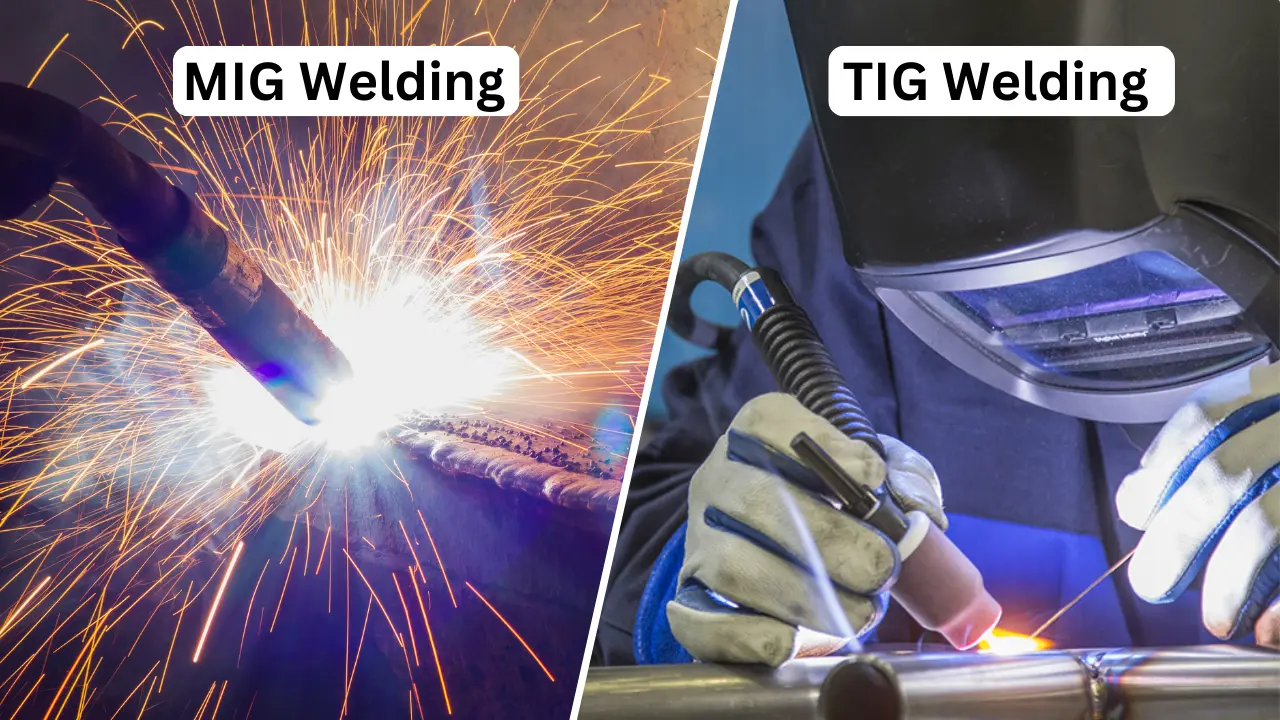
What Are Mechanical Processes?
Mechanical processes involve the application of physical forces or actions to alter the shape, size, or physical properties of a material without changing its chemical composition. These methods are essential in various fields, including mechanical engineering, manufacturing, and materials science. Common mechanical processes include cutting, grinding, milling, drilling, forging, rolling, and extrusion, each serving a specific function in modifying materials for practical use. These processes enable raw materials—such as metals, polymers, and composites—to be transformed into usable components or finished products with desired specifications.
Mechanical processing not only enhances the usability of a material but also improves its mechanical performance, such as strength, hardness, and durability. In industrial settings, the choice of mechanical process depends on factors such as material type, desired outcome, cost-effectiveness, and production scale. Overall, mechanical processes play a critical role in modern production systems, supporting innovation, efficiency, and the development of high-performance materials and products.
Types of Mechanical Processes:
- Machining Processes
- Forming Processes
- Shearing and Cutting Processes
- Joining and Assembly Processes
- Finishing and Surface Treatment Processes
- Material Shaping and Consolidation
- Recycling and Reduction Processes
Machining Processes
Machining processes are manufacturing methods used to remove material from a workpiece to shape it into the desired form. These processes include turning, milling, drilling, and grinding, each providing precise control over size, shape, and surface finish. Machining is essential in industries like aerospace, automotive, and medical device production due to its ability to produce accurate and high-quality components. With advancements like CNC (Computer Numerical Control), machining has become more efficient, automated, and capable of achieving tight tolerances and complex geometries.
Types of Machining Processes
- Turning
- Milling
- Drilling
- Boring
- Reaming
- Tapping
- Broaching
- Sawing
- Grinding
- Honing
- Lapping
- EDM (Electrical Discharge Machining)
Importance of Machining Processes
Precision and Accuracy
Machining allows for very precise shaping and finishing of materials, often to exact specifications, which is crucial for manufacturing high-quality parts.Versatility
It can be applied to a wide range of materials including metals, plastics, and composites, enabling the creation of diverse components.Surface Finish
Machining processes can produce smooth and fine surface finishes, improving the performance and appearance of the product.Customization
It enables custom or low-volume production of parts with complex geometries that might not be possible through casting or forging.Material Utilization
Machining removes only the necessary material, which can minimize waste compared to other manufacturing methods.Repair and Modification
It allows for the repair or modification of existing parts, extending their useful life.Tool and Die Making
Essential for producing the precise tools and dies used in mass production processes.
Applications of Machining Processes
Automotive Industry
Production of engine components, transmission parts, gears, shafts, and other precision parts.Aerospace Industry
Manufacturing of high-tolerance aircraft components such as turbine blades, structural parts, and landing gear.Medical Devices
Creation of surgical instruments, implants, and prosthetics requiring high accuracy and biocompatibility.Electronics
Machining of small, precise components for devices and housings.Tool and Die Industry
Making molds, dies, jigs, and fixtures used in other manufacturing processes.Defense and Military
Production of weapons, ammunition components, and other defense equipment parts.General Manufacturing
Producing parts for machinery, equipment, consumer goods, and more.
Advantages of Machining Processes
High Precision and Accuracy
Can produce parts with very tight tolerances and exact dimensions.Good Surface Finish
Produces smooth surfaces, often requiring little or no further finishing.Versatility
Applicable to a wide variety of materials, shapes, and sizes.Flexibility for Complex Shapes
Can create intricate and detailed parts that may be difficult to form by other means.Quick Setup for Small Production Runs
Ideal for prototypes, custom parts, and small batches without expensive tooling.Repair and Modification
Enables easy repair or alteration of existing parts.
Limitations of Machining Processes
- Material Waste : Removes material in the form of chips, which can be inefficient and costly for expensive materials.
- High Energy Consumption : Machining often requires significant power, especially for hard materials.
- Tool Wear and Maintenance : Cutting tools wear out and need regular replacement or sharpening.
- Slower for Large Production Runs : Less efficient than casting or forging for mass production due to slower material removal rates.
- Size Limitations : Limited by the size of the machine and tooling; very large parts may be difficult to machine.
- Heat Generation : Produces heat during cutting, which can affect material properties and tool life if not properly managed.
Forming Processes
Forming processes involve shaping materials, usually metals or plastics, by applying force without removing material. Common techniques include forging, rolling, extrusion, and sheet metal bending. These processes change the shape and size of a workpiece by deforming it plastically, improving strength and structural properties. Forming is widely used in manufacturing industries to produce parts like automotive components, pipes, and structural elements. It is efficient and cost-effective for mass production, often producing parts with excellent mechanical properties and minimal waste.
Types of Forming Processes
Forging (hot and cold)
Rolling (hot and cold)
Extrusion
Drawing
Sheet Metal Forming
- Stamping
Hydroforming
Importance of Forming Processes
Efficient Material Usage : No material is removed, so there is minimal waste, making it cost-effective, especially for expensive materials.
Improved Mechanical Properties : The deformation during forming often enhances strength and toughness through strain hardening and grain refinement.
High Production Rates : Many forming processes are suitable for mass production with fast cycle times.
Complex Shapes : Enables the production of complex and near-net shapes that reduce the need for further machining.
Versatility : Can be applied to a wide range of materials and product sizes, from small parts to large structural components.
Applications of Forming Processes
Automotive Industry : Manufacturing of body panels, crankshafts, gears, and axles.
Aerospace : Production of aircraft frames, turbine blades, and other structural parts.
Construction : Creation of beams, pipes, rods, and reinforcement bars.
Consumer Goods : Manufacture of household appliances, utensils, and hardware.
Industrial Machinery : Components like shafts, rollers, and bearings.
Advantages of Forming Processes
Minimal Material Waste : Since no cutting is involved, raw material usage is optimized.
Enhanced Strength and Durability : Cold forming improves mechanical properties through work hardening.
Cost-Effective for Large Quantities : Ideal for mass production due to low per-part costs after tooling setup.
Good Surface Finish : Often produces parts with smooth surfaces reducing the need for finishing.
High Production Speed : Many forming methods can be automated for rapid production.
Limitations of Forming Processes
High Initial Tooling Cost : Tooling and dies can be expensive to design and manufacture.
Material Limitations : Some brittle materials or very hard metals may not be suitable for forming.
Size and Shape Restrictions : Complex internal geometries may be difficult to form.
Residual Stresses : Plastic deformation can induce stresses that may require stress-relief treatments.
Limited to Ductile Materials : Materials must have sufficient ductility to undergo plastic deformation without cracking.
Shearing and Cutting Processes
Shearing and cutting processes involve separating or removing material from a workpiece by applying force, usually through sharp tools or blades. Common methods include shearing, blanking, punching, and slitting, which are widely used in sheet metal fabrication. These processes create desired shapes by cutting along a defined line without melting or chemical changes. Shearing and cutting are essential for producing components with precise dimensions and clean edges, commonly used in manufacturing industries such as automotive, aerospace, and appliance production.
Types of Shearing and Cutting Processes
- Shearing
- Punching
- Blanking
- Nibbling
- Slitting
- Laser cutting (though often thermal, some mechanical systems exist)
- Water jet cutting (uses mechanical erosion)
- Plasma cutting (more thermal, but often used in mechanical workflows)
Importance of Shearing and Cutting Processes
Basic Metalworking Operation : Essential for preparing raw material blanks for further manufacturing.
High Speed and Efficiency : Capable of quickly cutting large quantities of sheet metal with minimal setup time.
Cost-Effective Material Preparation : Reduces material handling and preparation costs by producing parts near net shape.
Foundation for Further Processing : Produces parts and blanks for stamping, forming, and welding operations.
Versatility : Suitable for many metals and thicknesses, making it widely applicable.
Applications of Shearing and Cutting Processes
Sheet Metal Fabrication : Cutting sheets to size for automotive panels, appliances, and machinery parts.
Manufacturing of Components : Creating blanks for stamped parts, brackets, and clips.
Construction Industry : Cutting structural metal sheets and plates for building frameworks.
Electrical Industry : Cutting metal sheets used in enclosures, panels, and chassis.
Packaging Industry : Producing metal caps, seals, and containers.
Advantages of Shearing and Cutting Processes
High Production Rate : Capable of cutting large volumes rapidly, suitable for mass production.
Minimal Material Waste : Produces narrow kerfs (cut widths), conserving material.
Low Tooling Costs : Generally lower tooling costs compared to complex forming or machining.
Simple Operation : Requires relatively simple equipment and less operator skill.
Clean Cuts : Produces straight, burr-free edges in suitable materials and thicknesses.
Limitations of Shearing and Cutting Processes
Limited to Certain Thicknesses : Efficiency and quality degrade with very thick or hard materials.
Burr Formation : Edges may develop burrs requiring secondary deburring operations.
Material Distortion : Can cause warping or deformation near the cut edges, especially in thin sheets.
Tool Wear : Blades and dies wear out, requiring frequent maintenance or replacement.
Limited to Straight or Simple Cuts : Complex shapes often need additional processing or more advanced cutting methods.
Noise and Vibration : Shearing can produce significant noise and vibration, affecting the work environment.
Joining and Assembly Processes
Joining and assembly processes are techniques used to connect two or more components to create a finished product. Common methods include welding, soldering, brazing, riveting, and adhesive bonding. These processes ensure mechanical strength and stability, allowing different materials to function as a single unit. Assembly often involves fitting parts together using fasteners like screws or bolts. These techniques are crucial in industries such as automotive, aerospace, electronics, and construction, enabling efficient production of complex, durable structures and devices.
Types of Joining and Assembly Processes
Bolting
Riveting
Screwing
Clamping
Snap fitting
Crimping
Welding (mechanical + thermal)
Brazing/Soldering (thermal, but relevant in assemblies)
Press fitting
Adhesive bonding (not mechanical, but common in conjunction)
Importance of Joining and Assembly Processes
Enables Complex Product Manufacturing : Allows the combination of different parts and materials to build complex assemblies.
Material and Design Flexibility : Different materials can be joined, enabling lightweight and optimized designs.
Repair and Maintenance : Facilitates the repair or replacement of parts without remanufacturing the entire product.
Cost-Effective Production : Reduces manufacturing costs by enabling modular design and easier mass production.
Structural Integrity : Proper joining ensures the strength, durability, and performance of the assembled product.
Applications of Joining and Assembly Processes
Automotive Industry : Assembling car bodies, engine components, exhaust systems, and interior parts.
Aerospace Industry : Joining airframe components, engines, and avionics modules.
Construction : Steel framework erection, pipeline welding, and prefabricated building assemblies.
Electronics : Circuit board assembly, soldering of components, and housing assembly.
Consumer Products : Assembling appliances, furniture, and toys.
Shipbuilding : Welding and fastening large structural components and piping.
Advantages of Joining and Assembly Processes
Versatility : Suitable for joining a wide variety of materials and shapes.
Flexibility : Enables modular design and easy upgrading or disassembly.
Efficient Production : Supports automation and mass production techniques.
Repair and Reuse : Components can be repaired or replaced individually, saving costs.
Improved Product Strength : Proper joining can enhance load distribution and structural integrity.
Limitations of Joining and Assembly Processes
Potential Weak Points : Joints can be points of weakness or failure if not properly designed or executed.
Additional Weight : Fasteners or welds may add weight to the assembly, which can be critical in aerospace or automotive.
Material Compatibility Issues : Some materials may be difficult to join due to differing properties like melting points or corrosion resistance.
Complexity and Cost : Some joining methods require expensive equipment or skilled labor (e.g., welding, brazing).
Inspection and Quality Control : Ensuring joint quality can be challenging and often requires non-destructive testing.
Thermal Effects : Processes like welding can cause distortion or residual stresses due to heat input.
Finishing and Surface Treatment Processes
Finishing and surface treatment processes improve the appearance, durability, and performance of materials and products. These methods include polishing, plating, painting, anodizing, and heat treatment. They protect against corrosion, wear, and environmental damage while enhancing surface smoothness and aesthetics. Such treatments are widely used in industries like automotive, electronics, and construction to extend product life and maintain functionality. By refining surface properties, finishing processes contribute to both the quality and longevity of manufactured components.
Types of Finishing and Surface Treatment Processes
- Grinding
- Polishing
- Buffing
- Honing
- Lapping
- Deburring
- Shot peening
- Sandblasting
- Burnishing
Importance of Finishing and Surface Treatment Processes
Enhances Appearance : Improves surface smoothness, color, and gloss, making products more visually appealing.
Improves Durability : Provides protection against corrosion, wear, and environmental damage, extending the product’s life.
Increases Functionality : Alters surface properties like hardness, friction, and conductivity to meet specific performance requirements.
Ensures Dimensional Accuracy : Corrects minor surface irregularities and achieves precise dimensions.
Prepares Surface for Further Processing : Creates suitable surfaces for painting, coating, or bonding.
Applications of Finishing and Surface Treatment Processes
Automotive Industry : Coating and polishing of engine parts, body panels, and trim.
Aerospace Industry : Surface hardening and corrosion protection of turbine blades and structural components.
Electronics : Plating and polishing of connectors, contacts, and housings.
Construction : Surface treatment of steel beams and metal fixtures to resist rust.
Consumer Goods : Polishing and coating of appliances, tools, and jewelry.
Medical Devices : Sterilization-friendly surface finishing of implants and surgical instruments.
Advantages of Finishing and Surface Treatment Processes
Improved Surface Quality : Produces smooth, attractive, and defect-free surfaces.
Enhanced Corrosion and Wear Resistance : Significantly increases lifespan by protecting against environmental factors.
Functional Surface Modification : Tailors surface hardness, friction, or electrical properties for specific uses.
Cost-Effective Maintenance : Easier to clean, maintain, and repair finished surfaces.
Increased Market Value : Enhances product appeal and quality perception.
Limitations of Finishing and Surface Treatment Processes
Additional Cost and Time : Increases overall production cost and process time.
Environmental Concerns : Some treatments involve hazardous chemicals requiring careful handling and disposal.
Process Complexity : Requires specialized equipment and skilled operators.
Thickness Control Challenges : Uneven coatings or finishes can affect part tolerances and performance.
Surface Damage Risks : Improper finishing can cause surface defects or weaken the substrate.
Limited Effect on Internal Features : Surface treatments mainly affect external surfaces and not internal structures.
Material Shaping and Consolidation
Material shaping and consolidation processes involve transforming raw materials into finished forms by shaping and joining particles or powders. Techniques such as casting, powder metallurgy, and additive manufacturing allow materials to be molded, pressed, or fused into solid objects. These processes enable the creation of complex shapes and structures that might be difficult with traditional methods. Material consolidation improves mechanical properties by bonding particles tightly, making these methods essential in producing advanced components for aerospace, automotive, and medical industries.
Types of Material Shaping and Consolidation
Powder metallurgy (compaction)
Compacting
Sintering (thermal, but preceded by mechanical compaction)
Compression molding
Injection molding (mostly for plastics, involves mechanical force)
Importance of Material Shaping and Consolidation Processes
Enables Complex Shapes : Allows production of parts with intricate geometries that are difficult or impossible to make by traditional casting or machining.
Efficient Material Use : Minimizes waste by using powders or particles consolidated precisely into near-net shapes.
Tailored Material Properties : Enables control over microstructure and composition for customized mechanical, thermal, or electrical properties.
Cost-Effective for High-Volume Production : Suitable for manufacturing small, precise parts in large quantities at relatively low cost.
Reduced Secondary Processing : Produces parts closer to final dimensions, reducing machining or finishing needs.
Applications of Material Shaping and Consolidation Processes
Automotive Industry : Manufacturing gears, bearings, and engine components from powdered metals.
Aerospace : Producing lightweight, high-strength components with complex shapes.
Electronics : Fabrication of magnetic materials, electrical contacts, and semiconductor components.
Medical Devices : Producing porous implants and precision surgical tools.
Tool and Die Making : Creating wear-resistant parts and specialized tooling.
Consumer Goods : Manufacture of hard metal cutting tools and wear parts.
Advantages of Material Shaping and Consolidation Processes
Material Efficiency : Minimal scrap or waste compared to machining or casting.
Ability to Combine Materials : Enables production of composites or multi-material parts.
Precision and Repeatability : Produces uniform parts with tight dimensional control.
Enhanced Material Properties : Fine microstructures and controlled porosity improve strength and wear resistance.
Energy Efficiency : Often requires lower temperatures and energy than melting-based processes.
Limitations of Material Shaping and Consolidation Processes
Limited Part Size : Typically suited for small to medium-sized components.
High Initial Equipment Cost : Requires specialized presses, furnaces, and sometimes clean environments.
Porosity Issues : Parts may have residual porosity affecting strength and fatigue life.
Material Limitations : Not all materials are suitable for powder processing or consolidation.
Complex Process Control : Requires precise control of powder characteristics, compaction, and sintering parameters.
Post-Processing Needs : Some parts require additional machining or heat treatments for final properties.
Recycling and Reduction Processes
Recycling and reduction processes focus on minimizing waste and conserving resources by reusing materials and reducing their volume. Recycling involves collecting, sorting, and processing used materials to create new products, reducing the need for raw resources. Reduction processes, such as shredding and compaction, decrease the size and volume of waste for easier handling and transport. These methods are vital for sustainable manufacturing and environmental protection, helping to lower energy consumption, reduce pollution, and promote a circular economy across industries.
Types of Recycling and Reduction Processes
- Shredding
- Crushing
- Grinding
- Compacting
- Baling
Importance of Recycling and Reduction Processes
Conserves Natural Resources : Reduces the demand for virgin raw materials like ores, minerals, and fossil fuels.
Environmental Protection : Minimizes landfill waste and pollution, reducing ecological footprint.
Energy Savings : Recycling often consumes less energy compared to producing materials from raw resources.
Economic Benefits : Provides cost savings in material procurement and supports sustainable industry practices.
Supports Circular Economy : Enables reuse of materials, promoting sustainability and resource efficiency.
Applications of Recycling and Reduction Processes
Metal Recycling : Recovery of steel, aluminum, copper, and precious metals from scrap for remelting and reuse.
Plastic Recycling : Processing of plastic waste into pellets for manufacturing new products.
Paper and Cardboard Recycling : Reprocessing waste paper into pulp for new paper products.
Electronic Waste Recycling : Extraction of valuable metals and components from discarded electronics.
Glass Recycling : Melting and remolding of glass waste into new containers or products.
Chemical Reduction : Processes like smelting and refining to extract pure metals from ores or recycled materials.
Advantages of Recycling and Reduction Processes
Resource Efficiency : Maximizes material usage and reduces raw material extraction.
Energy Conservation : Typically uses less energy than producing from virgin materials.
Waste Reduction : Decreases volume of waste sent to landfills or incineration.
Cost Savings : Lowers material costs and reduces environmental compliance expenses.
Job Creation : Supports industries and employment in recycling and materials recovery.
Limitations of Recycling and Reduction Processes
Quality Degradation : Recycled materials may have inferior properties compared to virgin materials.
Contamination Issues : Mixed or dirty waste can reduce recycling efficiency and product quality.
High Initial Investment : Recycling facilities and equipment can be costly to establish and maintain.
Energy Use in Processing : Some recycling methods still require significant energy and resources.
Logistics and Collection Challenges : Efficient collection and sorting systems are necessary for effective recycling.
Material-Specific Limitations : Not all materials are equally recyclable or economically viable to recycle.



